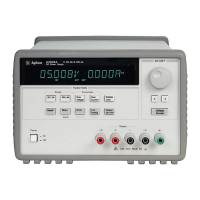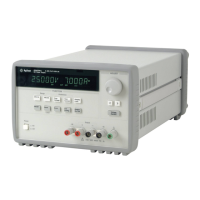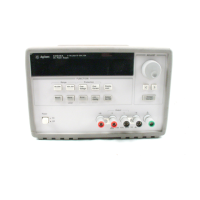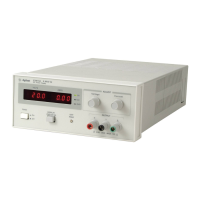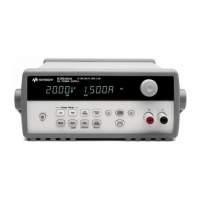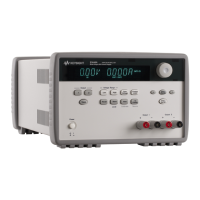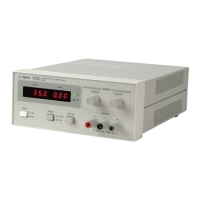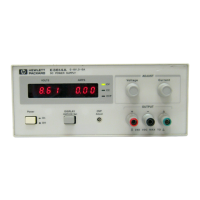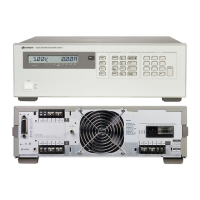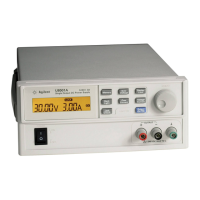Chapter 4 Remote Interface Reference
The SCPI Status Registers
90
The SCPI Status Registers
All SCPI instruments implement status registers in the same way. The status system
records various instrument conditions in three register groups: the Status Byte register,
the Standard Event register, and the Questionable Status register group. The status
byte register records high-level summary information reported in the other register
groups. The diagrams on the subsequent pages illustrate the SCPI status system used
by the power supply.
An example program is included in chapter 6, “Application Programs,” which shows
the use of the status registers. You may find it useful to refer to the program after
reading the following section in this chapter.
What is an Event Register?
An event register is a read-only register that reports defined conditions within the
power supply. Bits in an event register are latched. Once an event bit is set, subsequent
state changes are ignored. Bits in an event register are automatically cleared by a query
of that register (such as *ESR? or STAT:QUES:EVEN?) or by sending the *CLS
(clear status) command. A reset (*RST) or device clear will not clear bits in event
registers. Querying an event register returns a decimal value which corresponds to the
binary-weighted sum of all bits set in the register.
What is an Enable Register?
An enable register defines which bits in the corresponding event register are logically
ORed together to form a single summary bit. Enable registers are both readable and
writable. Querying an enable register will not clear it. The *CLS (clear status)
command does not clear enable registers but it does clear the bits in the event registers.
To enable bits in an enable register, you must write a decimal value which corresponds
to the binary-weighted sum of the bits you wish to enable in the register.
What is a Multiple Logical Output?
The three-logical outputs of the power supply include an INSTrument summary status
register and an individual instrument ISUMmary register for each logical output. The
ISUMmary registers report to the INSTrument register, which in turn reports to bit
13 of the Questionable status register. This is shown pictorially on the next page.
Using such a status register configuration allows a status event to be cross-referenced
by output and type of event. The INSTrument register indicates which output(s) have
generated an event. The ISUMmary register is a pseudo-questionable status register
for a particular logical output.
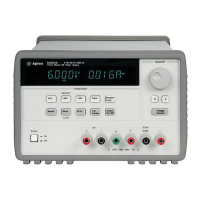
